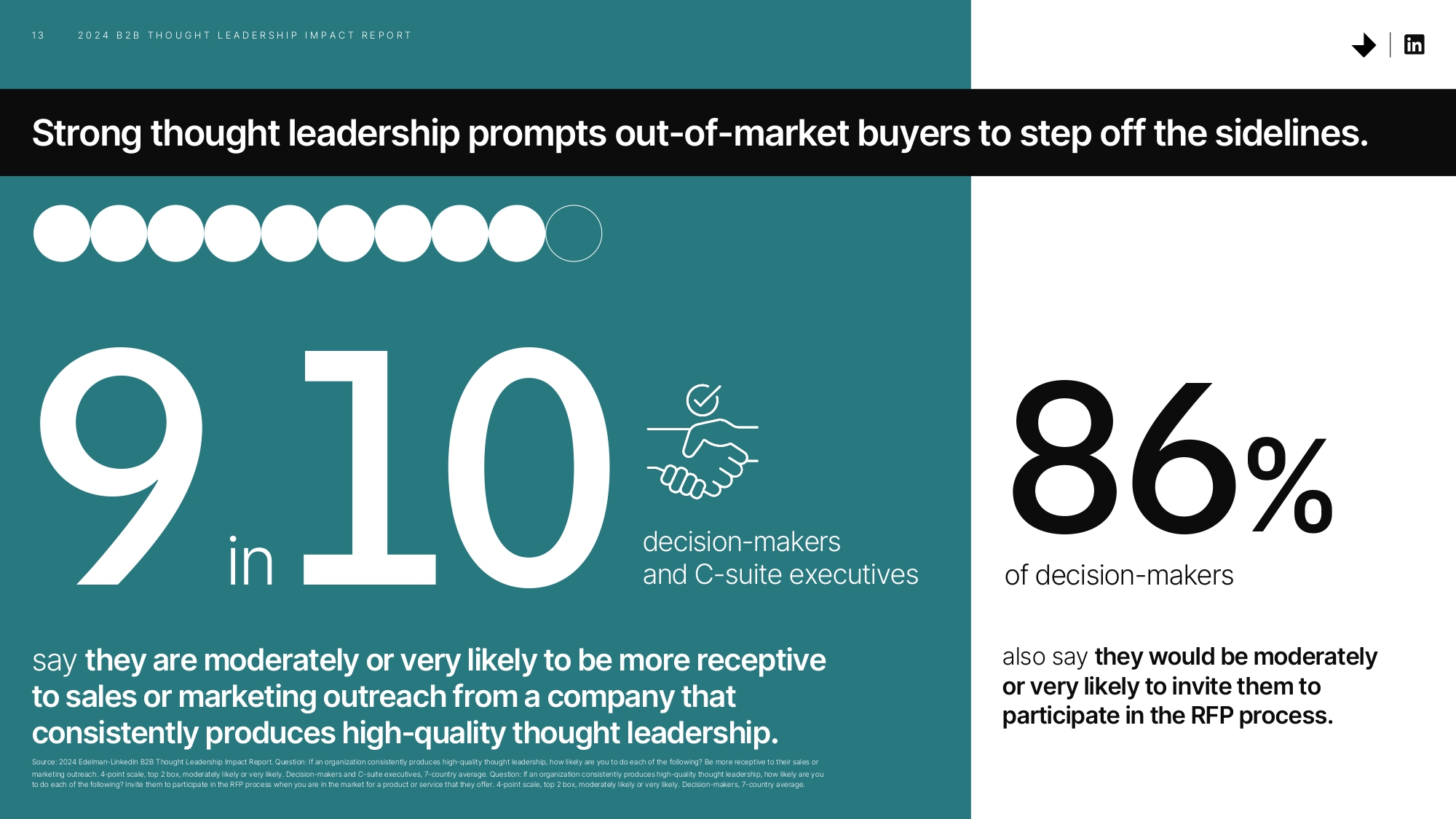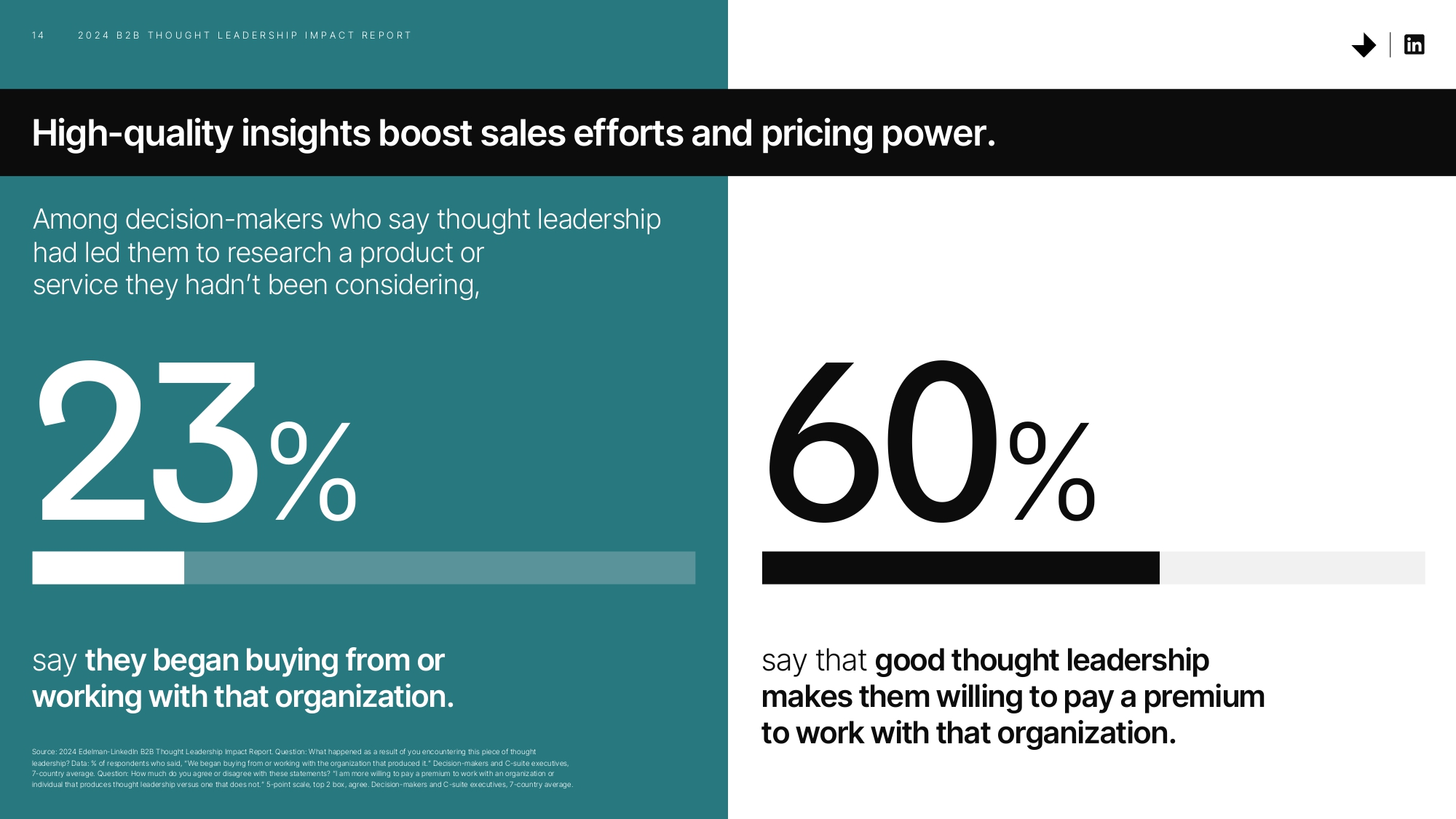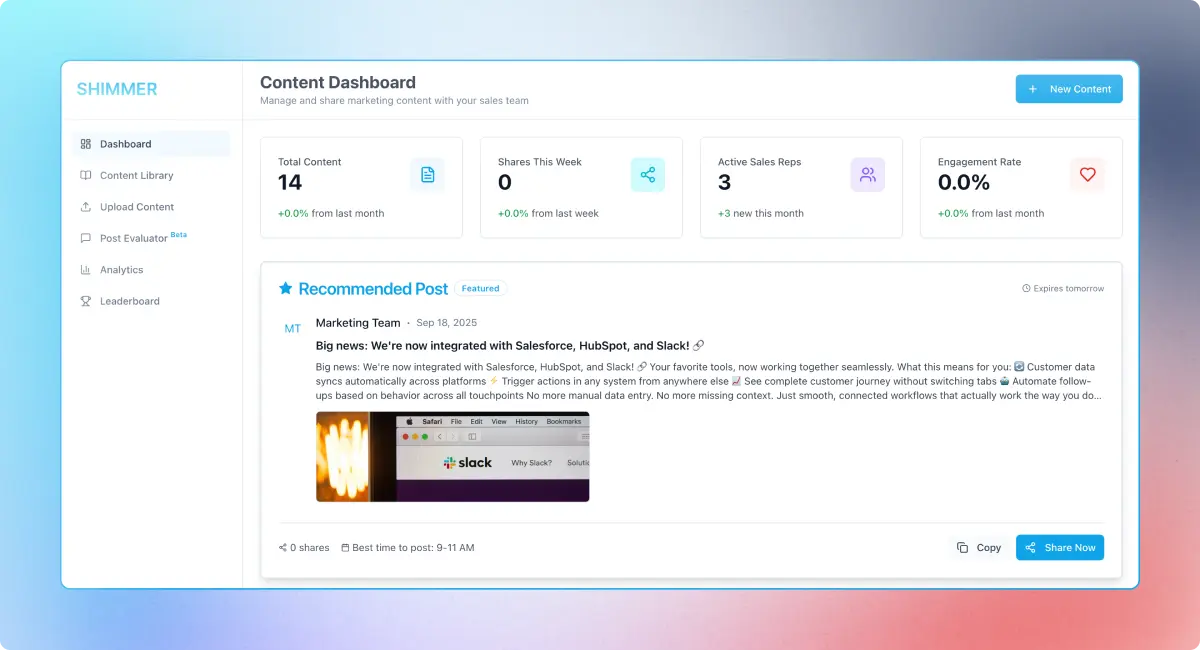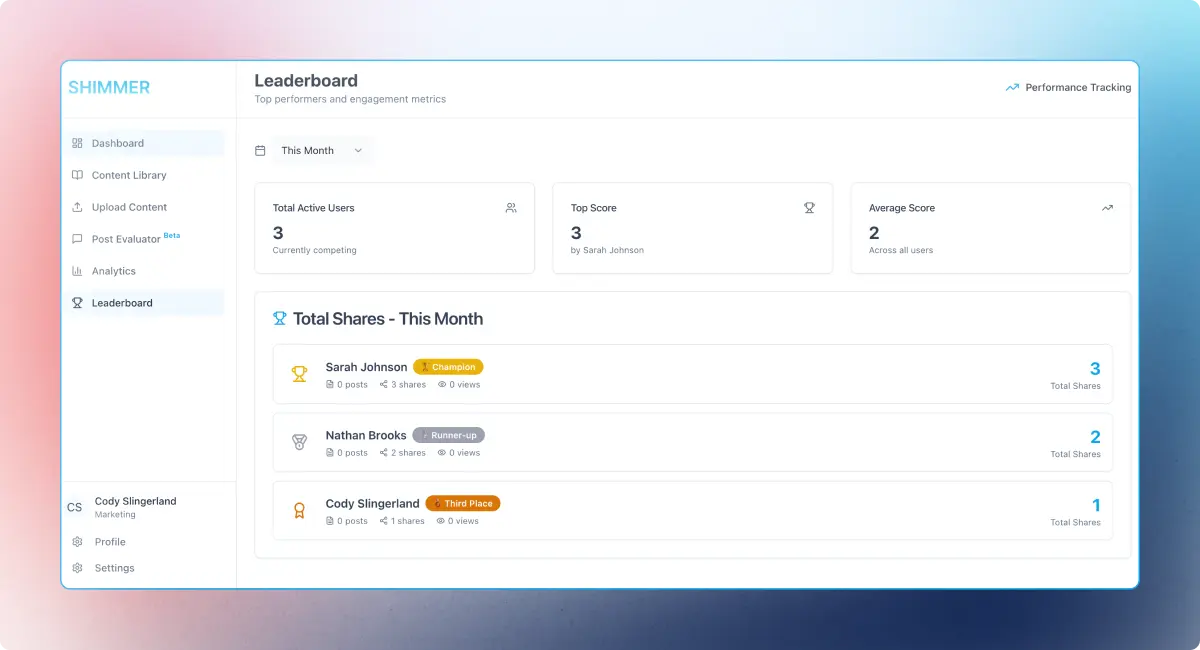2025 Guide
The most powerful brand amplifier isn't a six-figure ad campaign or a fancy marketing automation platform. It's already sitting at desks across your organization, scrolling through LinkedIn during coffee breaks.
Content shared by employees receives 8x more engagement than content shared by brand channels, while employees are responsible for approximately 30% of their company's overall engagement on LinkedIn. The question isn't whether employee advocacy works; it's how to make it scalable, measurable, and sustainable.
When LinkedIn shut down its free employee advocacy features in late 2024, companies realized they needed purpose-built platforms to orchestrate advocacy at scale. Today's LinkedIn employee advocacy platforms transform scattered social sharing into coordinated programs that drive brand awareness, pipeline generation, and talent acquisition.
This guide breaks down everything you need to evaluate, implement, and maximize a LinkedIn employee advocacy platform, from must-have features to proven strategies that drive measurable business results.
Chapter 1
Think of LinkedIn employee advocacy platforms as the difference between asking every sales rep to manually find and share content versus giving them a Netflix-like library where relevant posts appear automatically and are ready to share instantly.
These platforms are purpose-built for content curation, distribution, and measurement across employee social networks.
A few of the key players include Shimmer, DSMN8, GaggleAMP, and EveryoneSocial (who pioneered this space back in 2013).
These platforms deliver functionality that manual sharing can't match:
Why does this matter?
73% of B2B decision-makers say thought leadership content from individuals is more trustworthy than marketing materials from brands, according to the 2024 Edelman-LinkedIn B2B Thought Leadership Impact Report.
When your employees share insights, they're not just amplifying your reach; they're lending credibility that your company page simply cannot create.
Native LinkedIn features like the now-defunct "My Company" tab offered basic sharing, but lacked the segmentation, analytics, and cross-platform capabilities that dedicated platforms provide.
When LinkedIn exited the advocacy space, they essentially validated what DSMN8's CEO Bradley Keenan had been arguing: companies need specialized software, not feature add-ons, to scale advocacy properly.
Chapter 2
Here's an uncomfortable truth: your corporate LinkedIn page is a ghost town compared to what your employees can unlock.
While your carefully crafted company posts struggle for visibility, your employees' networks are primed for engagement, collectively driving 30% of a company's overall LinkedIn engagement. The business impact spans every function, from marketing reach and sales conversions to talent acquisition and ROI that makes finance teams actually smile.
Here's the breakdown ...
From a marketing perspective, employee advocacy solves the cold start problem that plagues organic reach. When EveryoneSocial activated 10,000+ Dell employees, they generated 150,000 shares reaching 1.2 million people in one year. All organic. No ad spend.

The thought leadership angle is particularly potent: 75% of decision-makers say thought leadership led them to research a product they weren't previously considering.
Your employees aren't just sharing posts; they're opening doors to accounts that might otherwise never consider you.
Leads from employee advocacy convert 7x more frequently than traditional marketing leads. Why? Because they arrive pre-warmed by a human relationship, not a retargeting ad.

For instance, GaggleAMP customer Magna5 drove 8% of its total sales pipeline through employee sharing. When 90% of decision-makers say they're more receptive to sales outreach from companies producing quality thought leadership, your sales team's LinkedIn presence stops being nice-to-have and starts being quota-critical.
Talent acquisition might be advocacy's most underrated use case. In tight labor markets, brand recognition can determine whether or not top candidates even click "apply."
When every employee becomes a recruiter, sharing content and job openings through their networks, you tap into passive candidates who trust peer recommendations over corporate career pages. According to LinkedIn research, job openings shared by employees yield 30% more applicants than those posted only on company pages.
The trust factor is the underlying force multiplier. Decision-makers aren't just consuming thought leadership; 60% say they're willing to pay a premium to work with organizations producing quality thought leadership.

Employee voices carry inherent authenticity that corporate pages can’t replicate. When your solution architect shares a technical deep-dive, it lands differently than when your marketing department shares the same content.
Chapter 3
The brutal truth about employee advocacy is that even the most enthusiastic employees are busy. The average employee spends only 22 minutes per week on advocacy activities. If your platform makes participation feel like homework, you've already lost.
Here’s what to look for …
You need a platform where marketing has control over what content can be shared. This allows marketing to add pre-approved posts that help amplify the company’s LinkedIn reach but also maintain consistent messaging.
Shimmer gives Marketing the ability to add and edit content, where team members with the Sales role can only view and share content. This enables Marketing to control messaging and priortize the company’s best performing or most urgent content.

For example, marketing teams can recommend posts for SDRs or other sales member to share that day or week (like an upcoming event or recent product launch).
One-click sharing is table stakes. Members should be able to login and share content with the click of a button. The harder sharing is, the less likely employees will be to consistently share.

Features like instant sharing, AI-generated content variations, and filters for quickly finding content all streamline the process of sharing content fast. Additionally, features like Shimmer’s Slack integration post content recommendation directly to Slack, so sales members can find and share content directly from tools they already use.
When you're starting out, keep analytics simple and focus on metrics that prove employees are actually participating and that their content is being seen.
Essential metrics to track:
For many organizations, simply getting sales team members to share more often on LinkedIn is a good starting point. Salespeople who share content are 45% more likely to exceed sales quotas (LinkedIn Sales Solutions), so even basic participation tracking can correlate to revenue impact.
As your program matures, look for platforms that calculate earned media value — translating your employees' organic reach into what you would have spent on paid advertising to achieve the same results. This metric becomes critical when justifying continued investment to executives, but it's not where you need to start.
The key is choosing a platform that scales with you: simple dashboards for launch, but robust analytics available when you're ready to prove sophisticated ROI.
Integration capabilities determine whether your advocacy platform becomes part of your team’s workflow or another abandoned login. The goal is to eliminate friction: employees shouldn't need to remember to check yet another app or portal.
For example, does the LinkedIn advocacy platform integrate with Slack or Microsoft Teams?
Most employees check Slack or Teams dozens of times per day. If your advocacy platform pushes content notifications directly into these channels, sharing becomes frictionless. Employees see "New content ready to share" right in their workflow, click once, and they're done.
Without this integration, employees must remember to log into a separate platform, browse a content library, and manually copy content to LinkedIn. Of course, you still want to give employees the opportunity to do both, but any extra friction kills participation rates.
With Shimmer, companies can connect their Shimmer account to a dedicated channel in Slack. When Marketing team members recommend a post to share that day or that week, the recommended post if pushed to Slack. This way, sales members see the post directly in Slack and can share from there without needing to login to Shimmer every day.
Compliance workflows matter more than you think, especially in regulated industries like financial services, healthcare, and pharmaceuticals. The right platform prevents compliance issues before they happen rather than forcing you to police violations after the fact.
Key compliance features:
For organizations in regulated sectors, these features aren't nice-to-haves—they're requirements. The last thing you need is a well-meaning employee sharing something that triggers a compliance review or regulatory inquiry.
The challenge with employee advocacy is maintaining momentum after the initial launch excitement fades. Gamification mechanics tap into intrinsic motivators (recognition, achievement, competition) to sustain participation over time.
Effective gamification features include:
The most sophisticated platforms combine intrinsic rewards (career development, thought leadership positioning) with extrinsic rewards (prizes, recognition) to maintain engagement across different personality types and motivations.

Chapter 4
Technology is the easy part. Culture change is the hard part.
The difference between programs that thrive and programs that collect dust boils down to buy-in, thoughtful onboarding, and a sustainable content strategy.
Securing executive buy-in starts with speaking the language executives care about: business outcomes, not social media vanity metrics. When you pitch advocacy, lead with "salespeople who share content are 45% more likely to exceed sales quotas", not "we'll get more likes."
Or, the fact that 61% of organizations now say employee advocacy is "extremely important" or "very important" means you're not selling a fringe idea; you're catching up to where the market already is.
Present advocacy as a competitive necessity, not an experimental, nice-to-have.
The best approach is show-don't-tell: instead of hour-long training sessions, get people sharing in their first week. The onboarding goal isn't creating platform experts; it's removing any excuse not to participate.
Training best practices focus on the "why" more than the "how." Help employees understand that advocacy builds their personal brand (96% say it benefits their careers). Position it as professional development, not corporate busy-work.
Address the fear factor: many employees worry about posting the "wrong" thing or looking silly. Pre-approved content libraries eliminate the scary blank page, and gamification makes experimentation feel safe because everyone's learning together.
In Shimmer, Marketing team members control what content is added to your company’s content library. Sales team members can see and share this content, but cannot add new posts. This gives Marketing the control to provide pre-approved content that ensures consistent brand messaging.
The temptation is to treat employees as megaphones for press releases. Don't. Dell's successful advocacy program follows an 80/20 rule: 80% valuable industry content and personally interesting material, 20% company content.
This works because employees won't share self-promotional garbage that makes them look like corporate shills, but they will share genuinely useful insights that position them as knowledgeable professionals.
Building a culture of advocacy means making it sustainable, not a flash-in-the-pan campaign. Regular content refreshes keep the library interesting. Celebrate wins publicly. When someone's post generates a qualified lead, tell that story in all-hands meetings.
How to choose the right LinkedIn employee advocacy platform
Not all LinkedIn employee advocacy platforms are created equal, and the wrong choice will haunt you through multi-year contracts and low adoption rates. Here's how to evaluate your options strategically.
Your company size determines both needs and realistic adoption potential.
Different platforms excel at different objectives. Define your top goal before evaluating features.
Sales reps won't use platforms that feel clunky or time-consuming. Look for:
Look for content curation from external sources, employee content creation tools, and engagement analytics. 73% of B2B decision-makers say thought leadership content is more trustworthy than marketing materials. Your platform should support original thinking, not just amplifying press releases.
Focus on recruiting-specific workflows, ATS integration to measure application sources, and employee storytelling features that feel authentic. Quality talent researches companies through employee social profiles before applying.
Look for AI-powered paraphrasing and dynamic content generation. When 20 employees share identical posts, LinkedIn's algorithm flags it as spam. Platforms that automatically create variations protect your organic reach while making participation effortless.
Most demos showcase admin dashboards, but success depends on whether employees can find and share content effortlessly. DSMN8's 2025 data shows employees spend only 22 minutes per week on advocacy. Your platform needs to make every second count.
Easy-to-navigate content libraries: Employees shouldn't have to wade through dozens of posts to find something relevant. Look for advanced filtering by topic, content type, categories, tags, or department. Search functionality should be fast and intuitive.
One-click sharing to LinkedIn: The gold standard is a single button that posts directly to LinkedIn without copying, pasting, or switching apps. Employees should review the content, maybe add a personal comment, and click "Share". Done.
AI-generated copy variations: Not every employee wants to share the exact same post verbatim. The best platforms offer AI-powered paraphrasing that maintains the core message while adjusting tone, length, or emphasis. This lets employees match content to their personal brand while solving the duplicate content problem that kills organic reach when 20 people post identical text.
Integration with Slack/Microsoft Teams: Content notifications should appear where employees already work. When new advocacy content is published or recommended, employees see it in their Slack channel or Teams chat; no need to remember to check a separate platform.
Platform fees are just the beginning.
Calculate true costs:
A $500/month platform requiring 20 hours of weekly management costs more than a $2,000/month platform needing 5 hours weekly.
Generic case studies mean nothing without context.
Ask for:
Questions for references:
Chapter 5
The most successful LinkedIn employee advocacy programs aren't built on the most expensive platforms; they're built on platforms that make sharing effortless, authentic, and valuable for employees.
If your primary goal is sales enablement and boosting your LinkedIn presence, Shimmer was designed specifically for this. With AI-powered content personalization, one-click sharing, and seamless Slack integration, Shimmer eliminates the friction that kills participation in traditional advocacy programs.
Advocacy programs succeed because of the intersection of the right platform, committed leadership, engaging content, and employees who see personal benefit from participation. Your employees' combined networks are exponentially larger than your company page, and their authentic voices carry more trust than corporate messaging.
Choose a platform that makes advocacy effortless for employees, valuable for their careers, and measurable for your business. The platform that employees actually use consistently will always outperform the one with the most impressive demo.